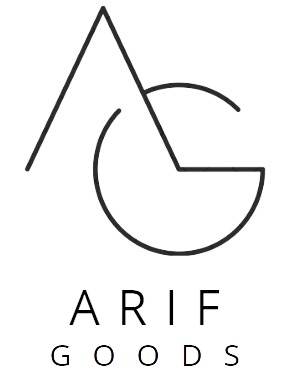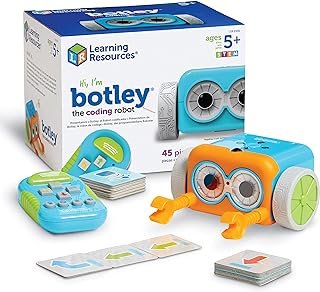Introduction
Educational toys play a crucial role in the development of a child. By merging learning with play, these toys foster cognitive, emotional, and social growth in young minds. Cognitive development is enhanced through interactive play, where children learn problem-solving skills, improve memory, and build their concentration levels. Emotionally, these toys help children express themselves and manage their feelings, fostering a sense of achievement and confidence. Socially, group play with educational toys encourages cooperation, sharing, and communication, critical skills for forming healthy relationships.
Choosing the right educational toy requires careful consideration by parents and educators. Age-appropriateness is a primary factor, ensuring the toy matches the developmental stage of the child. For instance, toys designed for toddlers will vastly differ from those intended for older children. Safety is another crucial element; toys should be made of non-toxic materials, have no sharp edges, and be robust enough to withstand rough play without breaking. Engagement level is equally important – toys should be captivating enough to hold the child’s attention while being challenging yet achievable to encourage persistence and resilience.
Moreover, educational toys should ideally offer a balance between fun and learning. This engagement ensures that the child remains interested and enjoys the process of learning. Introducing these toys into daily routines can significantly enhance a child’s developmental trajectory. As we proceed through this blog post, we will explore a carefully curated selection of the best educational toys available, each with unique features designed to boost learning in enjoyable and innovative ways.
“`
Top 10 Educational Toys for Kids
1. LEGO Classic Creative Bricks

Recommended Age Group: 4+ years
Skills Developed: Creativity, Fine Motor Skills, Problem-solving
Description: The LEGO Classic Creative Bricks set encourages creativity and imagination by allowing kids to build anything they can think of. With a diverse range of shapes, sizes, and colours, children can create structures, vehicles, and more. What sets it apart is its versatility and open-ended nature, fostering endless possibilities. Parents can incorporate LEGO into daily playtime by building alongside their children and encouraging storytelling through the creations. Maximizing educational benefits can be achieved by setting themed building challenges or integrating counting and colour recognition exercises.
2. Melissa & Doug Abacus

Recommended Age Group: 3+ years
Skills Developed: Math Skills, Hand-Eye Coordination
Description: The Melissa & Doug Abacus is a classic educational tool designed to teach basic math concepts such as addition, subtraction, and counting. It features colourful beads that children can slide back and forth on wooden rods. Its standout feature is its simplistic and tactile nature which makes learning tangible. Parents can easily integrate the abacus into learning routines by practising counting and simple math operations with their children. To maximize its benefits, introduce basic math games or use it to demonstrate patterns and sequences.
3. Fisher-Price Think & Learn Code-a-pillar

Recommended Age Group: 3-6 years
Skills Developed: Logical Thinking, Problem-solving, Sequencing
Description: The Code-a-pillar teaches early coding skills by allowing kids to create sequences for the toy to follow. Each segment of the ‘caterpillar’ represents a different command, such as moving forward or turning. It stands out because it introduces foundational coding concepts in an engaging, hands-on manner. Parents can maximize their educational potential by encouraging children to plan their sequences and debug any ‘errors’ in their programs, thus developing critical thinking skills.
4. LeapFrog LeapStart Interactive Learning System

Recommended Age Group: 2-7 years
Skills Developed: Reading, Writing, Critical Thinking
Description: The LeapFrog LeapStart offers interactive books that cover a wide range of academic subjects and life skills. Its unique combination of physical books and electronic interactivity distinguishes it from traditional reading tools. Parents can incorporate its use by dedicating specific reading times and leveraging its quizzes and games. For enhanced benefits, parents can discuss the content of the books, ask open-ended questions, and connect the lessons learned to real-life scenarios.
5. Osmo Genius Starter Kit for iPad

Recommended Age Group: 5-12 years
Skills Developed: Critical Thinking, Math, Creativity
Description: The Osmo Genius Starter Kit combines physical game pieces with digital learning apps for activities like mathematics, spelling, and problem-solving. Its standout is the seamless interaction between physical and digital elements, making learning interactive and engaging. Parents can integrate Osmo into playtime by balancing screen time with hands-on challenges and asking thought-provoking questions related to the activities. To maximize benefits, set progressive goals and celebrate achievements.
6. Magna-Tiles Clear Colors Set

Recommended Age Group: 3+ years
Skills Developed: Geometry, Spatial Awareness, Fine Motor Skills
Description: Magna tiles are magnetic tiles that kids can use to build 3D structures, teaching them about geometric shapes and spatial relationships. Their unique translucence makes them visually stimulating. Parents can engage kids by collaborating on complex structures and discussing geometric concepts as they build. To enhance educational value, introduce challenges such as creating specific shapes or replicating real-world structures.
7. Snap Circuits Jr. Electronics Exploration Kit

Recommended Age Group: 8+ years
Skills Developed: Engineering, Logical Thinking, Problem-solving
Description: Snap Circuits Jr. allows kids to build functioning electrical circuits by snapping pieces together. It’s distinguished by its simplicity and hands-on approach to learning electronics. Parents can enhance learning by exploring more complex projects over time and discussing the principles behind each circuit. Incorporating real-world applications of circuits into discussions can further strengthen understanding.
8. Melissa & Doug Pattern Blocks and Boards

SHOP FROM AMAZON
Recommended Age Group: 3+ years
Skills Developed: Shape Recognition, Fine Motor Skills, Creativity
Description: This set includes wooden blocks and boards with patterns that children can complete, developing a sense of geometry and creativity. Its durable, simple components make it a timeless choice. Parents can participate by providing additional shapes and challenges and encouraging children to create their own patterns. Enhancing benefits can be achieved by discussing the properties of different shapes and their symmetries.
9. Learning Resources Botley the Coding Robot

Recommended Age Group: 5+ years
Skills Developed: Coding, Critical Thinking, Problem-solving
Description: Botley teaches coding without the need for screens, using a remote programmer to guide the robot through various tasks. It stands out because it brings coding into the tactile world, making it accessible and fun. Parents can integrate Botley into playtime by setting up obstacle courses and encouraging kids to program Botley to navigate them. To maximize learning, parents can introduce coding challenges that involve sequential thinking and logic.
10. ThinkFun Gravity Maze Marble Run Logic Game

Recommended Age Group: 8+ years
Skills Developed: Logic, Spatial Reasoning, Engineering
Description: The Gravity Maze game challenges kids to build a path for a marble to reach a target using logic and spatial reasoning. Its unique combination of physical and mental challenges sets it apart. Parents can engage with their children by solving puzzles together and encouraging them to think out loud about their reasoning. Maximizing benefits include gradually increasing puzzle difficulty and discussing strategies used in problem-solving.
Criteria for Selecting Educational Toys
Choosing the best educational toys for children requires careful consideration of several essential criteria. Parents and educators must evaluate toys based on developmental milestones, the balance between fun and learning, safety standards, and longevity of use. By adhering to these criteria, they can ensure they are fostering a child’s growth and making wise investments.
The first criterion is developmental milestones. Educational toys should correspond to the child’s age and stage of development. For instance, toys for infants should focus on sensory exploration, while toys for preschoolers should support language skills and basic problem-solving. Toys that align with developmental stages can significantly enhance cognitive, physical, emotional, and social growth.
Furthermore, there must be a balance between fun and learning. An educational toy should engage a child’s imagination and interest while promoting learning. Toys that are overly educational and lack entertainment value may not hold a child’s attention, reducing their learning potential. Conversely, toys that are only fun but offer little educational value may fail to stimulate intellectual growth.
Another essential consideration is safety standards. Parents should ensure that toys are free from any harmful materials and are appropriately constructed to avoid injuries. Checking for certification marks like the Consumer Product Safety Commission (CPSC) approval can help verify the toy’s safety.
Longevity of use is also crucial when selecting educational toys. Toys that grow with the child and offer multiple levels of challenges ensure extended use and continuous learning. Investing in versatile toys that adapt to a child’s evolving skills is not only cost-effective but provides ongoing developmental benefits.
To effectively evaluate educational toys before purchasing, parents should read reviews from other buyers and experts. Checking if the toy has received awards or recognition from educational bodies can also be a good indicator of its quality. Additionally, consulting educational resources and recommendations from educators can provide valuable insights into a toy’s educational potential.
By using these criteria, parents can select educational toys that offer meaningful, long-lasting benefits to their child’s learning and development.
Conclusion
In summary, selecting toys that foster learning and development is paramount in nurturing a child’s growth. Throughout this blog post, we have explored a diverse selection of toys that promote cognitive, physical, and social skills. From building sets and puzzles to interactive games and creative arts, each toy offers unique benefits that can significantly enhance a child’s educational journey.
Parents and caregivers must be intentional in their toy selections. By considering a child’s interests and developmental needs, they can choose toys that not only engage but also educate, making playtime both enjoyable and productive. Educational toys are more than just fun; they pave the way for critical thinking, problem-solving, and imaginative play.
We encourage readers to stay mindful of the types of toys they introduce to their children. Share your personal experiences with educational toys in the comments below. Your insights could be invaluable to other parents. For those looking to delve deeper into the world of educational play, numerous resources are available that offer guidance and reviews on the best learning toys.
As we continue to support the growth and development of our children, remember that the right toys can play a vital role in shaping their future. Let’s make informed choices that inspire curiosity, foster creativity, and build a strong foundation for lifelong learning.

